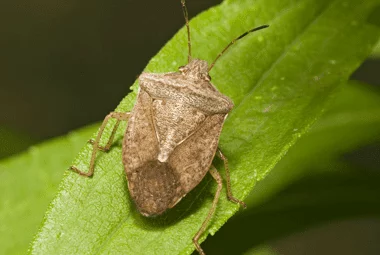As the temperatures cool a bit and the fall season is in full swing, it’s time to start planning and enjoying the upcoming holiday season – not a time when you want to worry about the invasion of fall pests! Four fall pests known to invade Eastern TN and surrounding areas include stink bugs, ladybugs, kudzu bugs, and boxelder bugs. Here are a few ideas for how to avoid a fall invasion of pests in your home.
Stink Bugs
Stink bugs start to enter homes in the fall, but they’re a problem that starts as early as March or April. When scared or squished, stink bugs put out a terrible smell (hence their name!) Stink bugs can be identified by the stripe running from shoulders to the abdomen and their five-sided bodies.
Ladybugs
Ladybugs are so prominent in Tennessee that they are the official state insect. The ladybug home invasion usually starts in the third week of October for Eastern TN. They come inside in search of a place to spend the winter and will often be found on the sunny sides of the home.
If you see ladybugs on the outside of your home, use a mild detergent to wash the areas and remove any material that may be attracting the ladybugs to that area of your home.
Kudzu Bugs
Often mistaken for a beetle, the kudzu bug has a beaklike piercing mouthpart, which they use to suck juices from plants. You won’t notice these bugs in the summer, but as fall arrives and the temperatures begin to drop a bit – kudzu bugs will find sun-exposed surfaces of your home to sun themselves and wait for an opportunity to get inside. When disturbed, kudzu bugs will release a foul smelling chemical, and if you have hundreds of these bugs indoors the smell can be overpowering!
Boxelder Bugs
If a boxelder bug comes into your home, chances are hundreds more will join them! Especially during the fall when they are in search of a place to wait out the winter. The boxelder tree is the primary home for these pests. Boxelder bugs can damage fruits and trees. Inside, boxelder bugs smell foul and are unpleasant due to their large populations! You can reduce their living areas outside to keep them from coming near your home in the first place. Remove landscaping debris, wood piles, loose siding, and loose tree bark from around your home to reduce areas where the boxelder bug can hide out.
Preventing the Fall Invasion
All of these pests find their way into your home via small cracks and openings. Caulking around window frames, doors, and all of the possible gaps of your home (utility pipes, outdoor faucets, etc.) can help prevent ladybugs, boxelder bugs, kudzu bugs, and stink bugs from getting inside. Also, check for broken screens and remove window air conditioners so the bugs cannot find their way in around them.
If you continue to have trouble with a fall invasion of pests, give us a call. We’ll help you eliminate your fall pests and put a plan in place to prevent them from returning.
